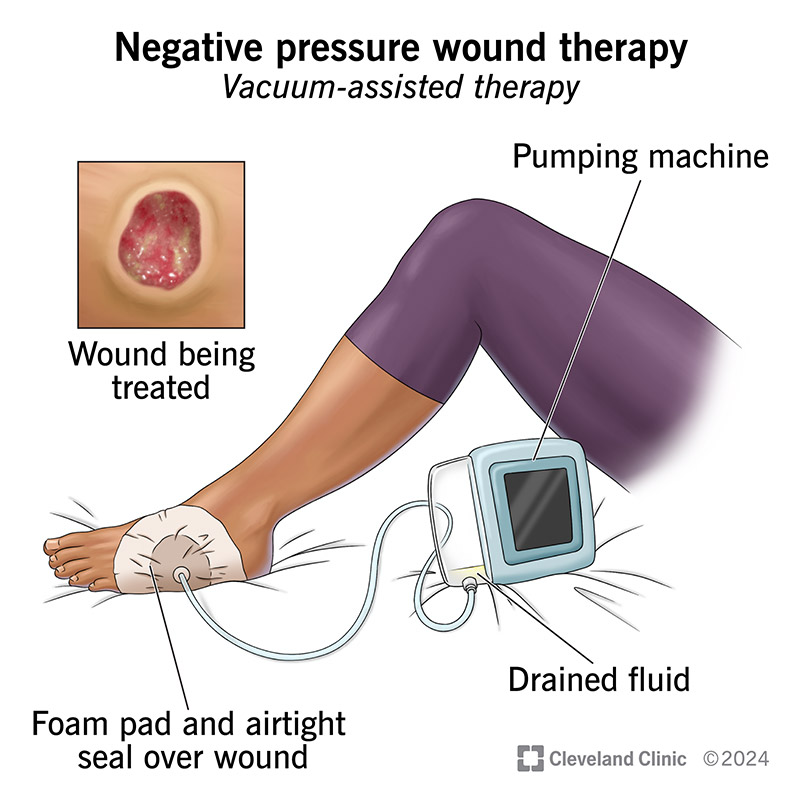Introduction
Wound treatment administration is a necessary aspect of health care, especially in the therapy of persistent injuries and complex injuries. Whether it's a simple cut or an extra difficult abscess, efficient wound administration can considerably influence recovery end results. Proper strategies not just accelerate healing but likewise minimize the risk of infection and complications. As health care specialists, understanding these techniques is paramount. In this article, we delve deep into Wound Treatment Monitoring: Techniques for Effective Outcomes, encompassing different facets such as training for experts, nursing education and learning, and advanced methods for handling intricate wounds.
1. Understanding Injury Care Management
1.1 What is Wound Treatment Management?
Wound treatment management describes the systematic strategy to treating wounds with appropriate analysis, medical diagnosis, and therapy protocols. It consists of every little thing from cleaning and clothing injuries to surveillance healing progress.
1.2 Significance of Wound Care
Effective injury treatment is vital because it aids avoid infections, advertises faster healing, and inevitably lowers health care prices associated with prolonged treatments.
2. Types of Wounds
2.1 Severe Wounds
Acute injuries are those that heal quickly without issues. They typically arise from surgical treatment or unintended injuries.
2.2 Persistent Wounds
Chronic wounds linger over time and are often associated with hidden problems such as diabetic issues or vascular disease.
3. The Duty of a Wound Treatment Specialist
3.1 What Does an Injury Care Professional Do?
An injury treatment expert focuses on identifying and treating various types of injuries using specialized understanding and techniques.
3.2 Training Required for Specialists
To come to be an injury treatment expert, one must undergo rigorous training that consists of both academic expertise and useful skills.
4. Wound Care Specialist Training
4.1 Overview of Training Programs
Training programs for wound treatment professionals vary extensively but typically consist of coursework on makeup, physiology, and the most up to date injury treatment technologies.
4.2 Certification Options Available
Various organizations use certifications in wound care management that enhance reliability and proficiency in the field.
5. Wound Care Educating for Nurses
5.1 Importance of Specialized Training
Nurses play an essential duty in person care; hence, specialized training in injury administration is vital for providing quality healthcare services.

5.2 Educational program Parts in Nursing Programs
Most nursing programs now include components concentrated on basic wound care training to outfit nurses with basic skills required in medical settings.
6. Wound Care Educating Courses
6.1 Online vs On-site Courses
With the surge of digital discovering platforms, several experts are selecting on the internet wound care training courses that supply versatility without jeopardizing on quality.
6.2 Course Web content Overview
Typical program content consists of anatomy pertinent to wound healing, ideal techniques in clothing application, infection control procedures, amongst others.
7. Basic Wound Care Training Essentials
7.1 Secret Skills Acquired Through Standard Training
Basic wound care training outfits individuals with skills like cleansing methods, applying dressings effectively, and recognizing signs of infection.
7.2 Value of Hands-on Practice
Theory alone isn't enough; hands-on technique is vital for establishing confidence and effectiveness in taking care of wounds effectively.
8. Advanced Techniques in Intricate Wound Care
8.1 Comprehending Intricate Wounds
Complex wounds call for customized treatments as a result of their nature-- frequently including much deeper cells or underlying health concerns that prevent healing processes.
Click here for more info8.2 Therapy Modalities
Advanced techniques consist of adverse stress injury treatment (NPWT), bioengineered cells, and various other ingenious strategies tailored to promote recovery in complicated cases.
9. Chronic Wound Care Management Strategies
9.1 Identifying Underlying Causes
Identifying the source of chronic injuries-- be it bad flow or diabetes mellitus-- is crucial for efficient therapy plans.
9.2 Multidisciplinary Approach
A successful persistent wound management approach commonly entails partnership among different doctor consisting of dietitians, podiatrists, and physical therapists.
10. The NDIS (National Disability Insurance Plan) & Wound Care
10.1 NDIS Support Services
For individuals under the NDIS structure needing continuous wound monitoring support solutions are important to guarantee they receive appropriate treatment customized to their needs.
10.2 Funding Options Available
Understanding financing choices readily available through NDIS allows clients to access essential therapies without economic burden.
Frequently Asked Concerns (Frequently asked questions)
Q1: What credentials do I require to end up being an injury care nurse?
A: Usually needs a nursing level in addition to specialized qualification in injury monitoring gotten through acknowledged programs or courses concentrated on nursing injury treatment training.
Q2: How long does it require to finish a wound care training course?
A: Training course period differs; nonetheless, many on-line programs can be finished within several weeks while detailed certification programs may take months depending on depth and schedule flexibility.
Q3: Can I handle my own chronic injuries at home?
Q4: Why is infection control essential in injury management?
A: Infection control prevents complications that can emerge from unattended infections which might delay recovery or result in much more severe wellness concerns calling for extensive medical intervention.
Q5: Exist details items suggested for chronic wound management?
A: Yes! The option of products relies on the kind of chronic wound; usual options include hydrocolloid dressings, alginates, foam dressings etc, tailored based upon individual demands assessed by health care providers.
Q6: Is there ongoing education and learning offered after preliminary certification?
A: Absolutely! Numerous organizations motivate constant professional development with workshops, workshops, on-line sources making sure experts stay current with advances in effective techniques connected to persistent injury care management.

Conclusion
In final thought, effective Wound Treatment Administration: Methods for Successful Outcomes rely greatly on skilled professionals who understand both fundamental concepts and advanced techniques crucial for promoting optimum healing problems across diverse client populations-- from severe injuries needing immediate attention to complex chronic injuries calling for ongoing analysis and treatment approaches customized in the direction of holistic health purposes. By focusing on education and learning via extensive training programs created specifically around progressing requirements within this vibrant area-- healthcare specialists can improve their capability providing phenomenal solution while guaranteeing positive client experiences producing effective end results over time.
